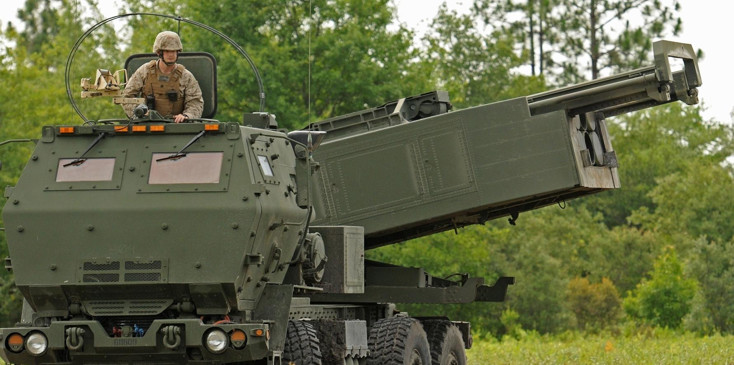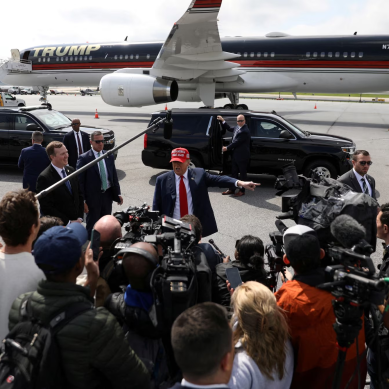
In the first phase of the war in Ukraine, the decisive weapon was arguably the British-made NLAW anti-tank bazooka, helping repel Russian forces from the fringes of Kyiv. The second phase was dominated by Russia’s 152mm artillery, bombing cities to rubble before its ground forces gradually moved in.
But the talk now is of the impact of the US-made Himars rocket artillery, which the Ukrainian forces have been using to halt the Russian advance by striking ammunition dumps in the rear – 50 according to the country’s defence minister, Oleksiy Reznikov – and whether they can create the conditions for a successful advance towards Kherson, one of the largest cities captured by the invaders.
Kherson, captured in early March, has long been a focus for the Ukrainians, with the defenders making limited gains in the countryside between Mykolaiv and the target city since April. But, apparently helped by the longer-range weapons, with an effective firing distance of up to 50 miles (80km), the Ukrainians are growing more confident.
Sergiy Khlan, an aide to the administrative head of the Kherson region, told Ukrainian TV a turning-point had been reached, and the region “will definitely be liberated by September”. It is a bold claim on the available evidence and perhaps not surprisingly, Ukraine’s president, Volodymyr Zelenskiy, instead talked about liberating Kherson “step by step”.
The Himars – of which Ukraine has 12 with four more on their way – appears to be having an impact in allowing Kyiv’s forces to target four key bridges leading into Kherson. The city, the only Russian stronghold west of the Dnieper River, is obviously strategically vulnerable if Ukraine can muster the force to push the occupiers out.
But the tale of the bridges partly illustrates some of the difficulties Ukraine faces in recapturing its population centres. Social media postings by Khlan make clear that Ukraine’s goal is not to destroy key bridges, in this case the Dariv Bridge across the Inhulets River east of the city, but rather to damage them to the point where the Russians cannot transport heavy equipment across them.
The Ukrainian military wants to ensure that food supplies can still cross into the city, and so, Khlan added, the country’s armed forces would “do everything possible not to destroy the structure”. That may be a difficult balance to strike, even allowing for the greater accuracy of the Himars – but more importantly it reveals a key constraint on the Ukrainians’ ability to strike back.
Russian officials, according to the RIA Novosti news agency, acknowledged damage to another of the key bridges, near the Kakhovka hydroelectric power station, across the Dnieper, about 40 miles to the east of Kherson. The damage, the Russians said, came from Himars rocket artillery, but the news agency shortly after released pictures to show workers apparently filling in a hole in the road.
If cutting off the city by destroying the bridges is challenging, then capturing it, given the remaining civilian population, will be harder. Russia has shown it was willing to destroy cities such as Mariupol and Sievierodonetsk before capturing them. But for Ukraine – seeking to liberate its own territory – that is not obviously an option. Dislodging the Russians may be difficult if they choose to stay in the city itself.
Nor is it obvious that the arrival of one longer-range weapon can create the conditions for a more rapid overall advance. Ukraine has no meaningful air power available, so it must rely on an assembling a preponderance of ground forces against an enemy that has held the city for nearly five months. Meanwhile, western supplies continue to arrive gradually rather than in the numbers Ukraine needs.
Reznikov said on Monday the first three of 15 Gepard mobile artillery guns promised by Germany back in April had arrived in Ukraine, and that he hoped to take delivery of several dozen Leopard tanks soon – most likely from Spain. The increasing supply may help Ukraine tip the balance on one part of the front, but so far there has been no evidence the defenders can manage a breakthrough.
After four months of gradual Russian advance in the east and the south, the arrival of Himars and rocket artillery looks to have tilted the military balance towards an equilibrium. But it is not yet obvious that the invaders can be rolled back: perhaps no wonder then that Khlan optimistically suggested the best option for the Russians was to voluntarily surrender Kherson.
- The Guardian report











